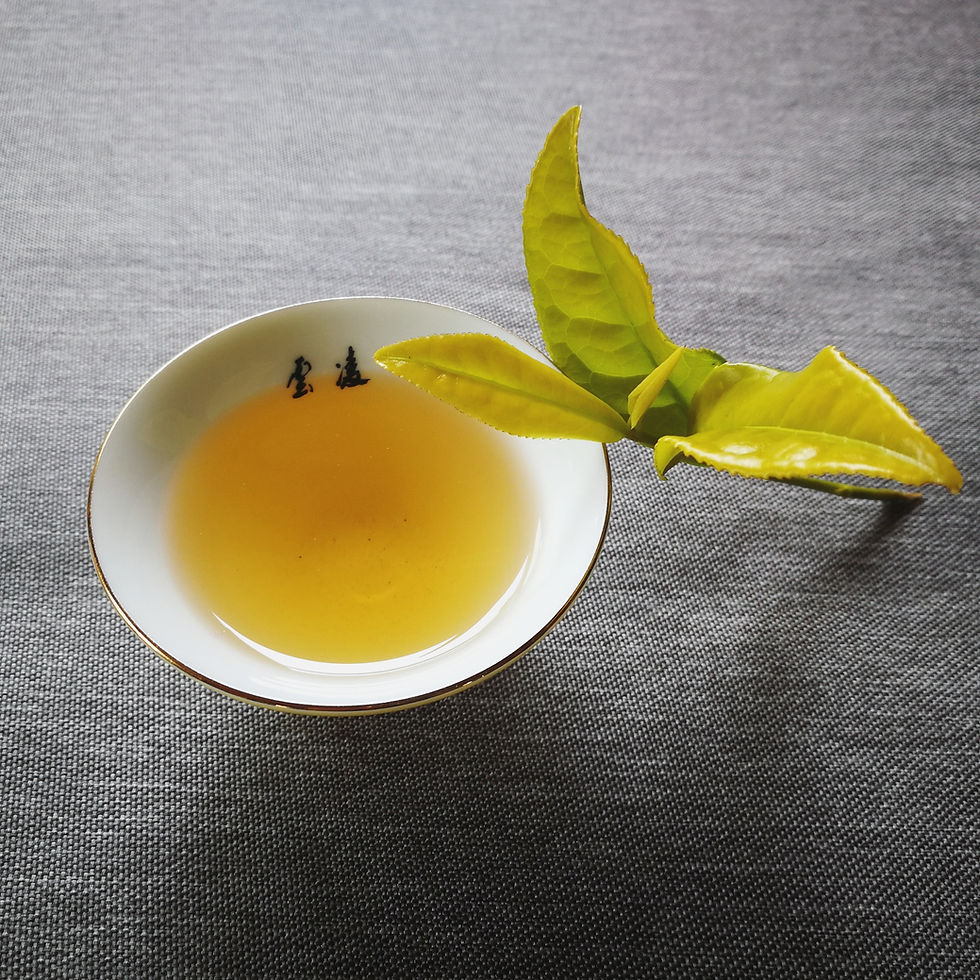Blog 160: The Quality Formation of Traditional White Tea (Part I)
- Valley Brook Tea

- Mar 4, 2020
- 2 min read
First of all, I’d like to thank everyone who’s been following this blog and our Dupont Circle tea store. We’re now open at 2101 P St NW, Washington DC 20037. We look forward to seeing all tea lovers here :)
- Yunhan Zhang
In our previous tea blogs, we mentioned that white tea has the “simplest” tea-making process. There are two tea-making steps missing in white tea tea-making: hot-fixation and rolling. The only tea-making that white tea has is the withering process.
Interestingly, because withering is the only tea-making step, it is extremely crucial to the overall quality of white tea products.
The length of withering is one important variable during the withering process. If the withering time is too short, fresh leaves cannot be properly oxidized and the polyphenols are not sufficiently converted, and the tea would taste more astringent; if the withering time is too long, lots of nutrients will be consumed and wasted, and the tea soup would taste plain and too watery.
Therefore, only a success withering process can deliver good quality white tea products. The decrease of water content in fresh leaves increases the concentration of various nutrients. The activation of polyphenols and hydrolytic enzyme triggers a series of reactions to form white tea’s unique quality characters.

- Polyphenols
Polyphenols count about 20% to 30% of all the dry substances in leaves. Polyphenols are quite active. Polyphenols can be oxidized with enzyme activity. The right level of heat and humidity can also accelerate the oxidization of polyphenols. Finally, polyphenols can also be oxidized slowly under normal temperature and pressure.
Oxidized polyphenols would soon polymerize or have other reactions to generate new chemical compounds to further influence the quality of white tea leaves.
Because white tea doesn’t have “the rolling” process, polyphenols can’t sufficiently mixed with enzymes. At the same time, the lack of rolling limits the oxygen supply. As a result, white tea has an astonishingly slow oxidization. This is also why white tea has a rather tranquil aroma and taste.
- Amino Acids
Amino acids decide how the freshness and the sweetness of the tea soup.
Amino acids in white tea are developed during the withering process. The increase in enzyme activity and protein hydrolysis create amino acids. Then, amino acids are combined with catechin to develop colored compounds.
The transformation of amino acids also has positive effects on the color and the aroma of the tea soup. Amino acids participate in non-enzymatic browning, which delivers the charming brownish color. Finally, amino acids transform into volatile aldehydes and other compounds that generate white tea’s unique herbal medicine aroma.
(We will continue this topic in our next tea blog)
We hope you enjoyed today’s blog. As always, if you have questions or suggestions, please leave a comment, tweet us @valleybrooktea or email the author directly at zhang@valleybrooktea.com. Please also follow us on Instagram @valleybrooktea and join our mail list to get our daily tea updates and our latest promotions!
This is a Valley Brook Tea original blog. All rights reserved.







That's really interesting — I hadn’t realized amino acids played such a big role in both the color and aroma of tea. It’s fascinating how something as simple as a chemical transformation can lead to the rich, herbal fragrance and the warm brown tone we associate with white tea. Definitely makes me appreciate a good cup even more! google baseball
The green tea buds are so fresh and cool, I really enjoy steeping the tea. nytimes crossword
The music in Geometry Dash Lite isn’t just background noise—it’s part of the game mechanics.
What happened to blog 161?